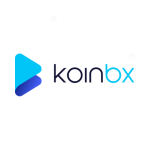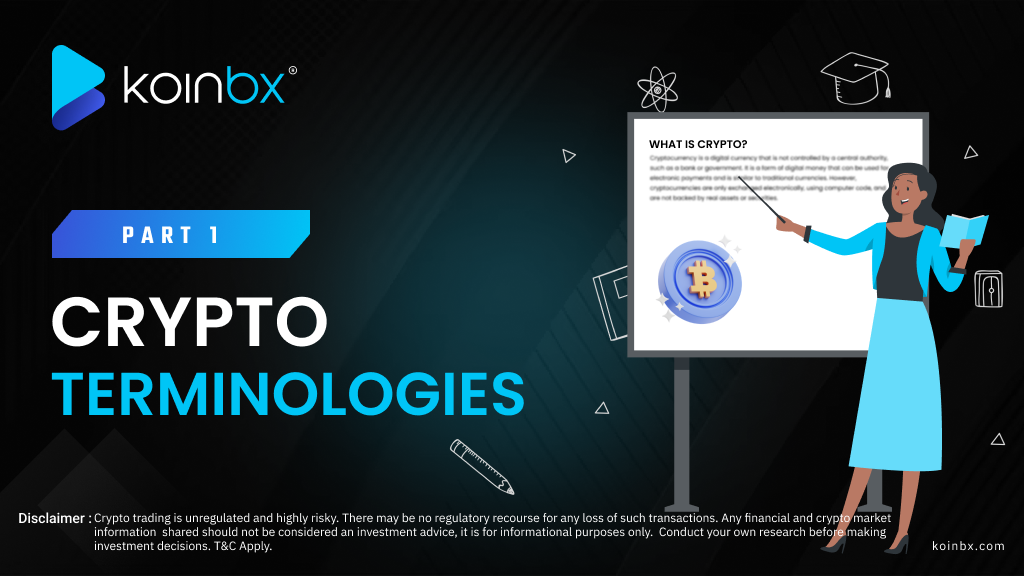Navigating the crypto landscape can feel like learning a new language, especially for beginners and intermediate traders. With a myriad of terms and jargon, it is easy to feel overwhelmed and confused. But fear not! This article aims to demystify some of the key terminologies that you will encounter in the crypto world. Whether you want to invest, trade, or simply expand your knowledge, these terms will empower you to make informed decisions on your financial journey.
A
Altcoins
Altcoin, short for alternative coins, comprises of any crypto assets other than Bitcoin. It offers diverse functionalities and features beyond what Bitcoin provides. Altcoin can serve various purposes, including facilitating smart contracts, giving privacy features (like Monero), or focusing on scalability.
All-Time High / All-Time Low
All-time high refers to the highest price ever reached by a crypto asset at any point since its inception. An ATH often represents a peak in investor interest and market sentiment. It can be an important psychological level for traders and investors, indicating potential resistance points where selling pressure may increase.
All-time-low refers to the lowest price ever recorded for a crypto asset since it was launched. An ATL can signal a period of significant selling pressure and loss of confidence among investors. It serves as a psychological benchmark for traders and may indicate a potential entry point for value investors who believe the asset is undervalued at that price.
B
Bull market
A bull market refers to a period of rising prices in the crypto market, characterized by increased investor confidence, optimism, and expectations of continued price increases. Bull market often attracts more traders and investors, leading to even higher prices and a strong market momentum.
Bear market
A bear market refers to a prolonged period during which supply exceeds demand, leading to low investor confidence and declining prices. In such markets, pessimistic investors anticipate further price drops, which is why they are commonly referred to as 'bears'.
Blockchain
A blockchain is a decentralized, distributed ledger technology that records transactions across many computers in such a way that the registered transactions cannot be altered retroactively. Blockchain technology ensures transparency, security, and immutability of transaction data. It enables peer-to-peer transactions without the need for intermediaries.
Block
A block is a collection of transaction data that is added to the blockchain. Each block contains a cryptographic hash of the previous block, a timestamp, and transaction data. Blocks are essential for the functioning of the blockchain, as they ensure the integrity and security of the transaction history.
Block reward
A block reward is the incentive given to crypto miners for successfully validating and adding a new block to the blockchain. Block rewards are crucial for the functioning of Proof-of-Work (PoW) crypto assets, incentivizing miners to contribute their computational power to secure the network.
C
Consensus
Consensus refers to the agreement among network participants on the validity of transactions or the state of the blockchain, ensuring that all nodes operate on the same version of the data. The two most prominent consensus mechanisms are proof-of-work and proof-of-stake.
Cryptography
Cryptography is the practice of securing information through techniques like encryption and decryption, ensuring data integrity, confidentiality, and authenticity in the crypto space.
D
dApp
A dApp (Decentralized Application) refers to a computer application that operates on a blockchain network. It is designed to be open-source, allowing users to interact without intermediaries, promoting transparency and security.
DAO
A DAO (Decentralized Autonomous Organization) is an organization represented by rules encoded as computer programs that are controlled by members, enabling collective decision-making without centralized authority.
DeFi
DeFi (Decentralized Finance) refers to financial services that utilize smart contracts on blockchains, offering users access to lending, borrowing, and trading without intermediaries.
DYOR
DYOR stands for "Do Your Own Research," a phrase commonly used in the crypto community, urging investors to conduct their own analysis and due diligence before making investment decisions.
E
ERC-20
ERC-20 is a technical standard for creating fungible tokens on the Ethereum blockchain.
EVM
The Ethereum Virtual Machine (EVM) is a decentralized computing emgine that executes smart contracts and runs applications on the Ethereum blockchain, allowing developers to create and deploy decentralized applications (dApps) in a secure manner.
F
Fiat
Fiat currency refers to government-issued money that are regulated by a central bank or authority.
Fork
A fork is an upgrade or modification to a blockchain's protocol that creates a divergence in the blockchain. It can lead to the creation of a new crypto asset, as seen with Bitcoin and Bitcoin Cash.
FOMO
FOMO stands "Fear of Missing Out," describes the anxiety that traders feel when they believe they might miss profitable investment opportunities, often leading them to make impulsive decisions in the crypto market.
FUD
FUD stands for "Fear, Uncertainty, and Doubt." It's a tactic used to spread negative information or rumors about a crypto to manipulate public perception and influence market behavior.
G
Gas
Gas refers to the fee required to conduct transactions or execute smart contracts on the Ethereum network.
Gwei
Gwei is a denomination of Ether (ETH), specifically used to calculate gas fees on the Ethereum network. One Gwei is equal to one billionth of an Ether (0.000000001 ETH)
H
Halving
Halving is an event in crypto asset where the reward for mining new blocks is cut in half. This process, common in Bitcoin, occurs approximately every four years and reduces the supply of new coins entering circulation.
Hash rate
The hash rate refers to the computational power used by a blockchain network to process transactions and secure the network. A higher hash rate indicates a stronger network and can affect the speed and security of transactions.
HODL
HODL is a term derived from a misspelling of "hold," encouraging investors to hold onto their crypto asset rather than selling it during market volatility.
I
Initial Coin Offering (ICO)
An ICO is a fundraising method used by crypto projects to raise capital by selling their tokens to investors in exchange for established crypto assets.
Initial Decentralized Offering (IDO)
Similar to ICO. IDO is also a fundraising method where tokens are offered directly on a decentralized exchange (DEX). This approach allows for immediate liquidity and decentralized trading, appealing to investors interested in projects with lower entry barriers.
Initial Exchange Offering (IEO)
An IEO is an another fundraising method conducted on a crypto exchange, where the exchange acts as an intermediary between the project and investors.
K
Know Your Customer (KYC)
KYC is a regulatory process used by crypto exchanges to verify the identity of their users. It aims to prevent fraud, money laundering, and other illegal activities by requiring customers to provide personal information and documentation.
L
Ledger
A ledger in crypto refers to a record-keeping system that stores all transactions made on a blockchain. It ensures transparency and integrity, as every transaction is recorded in a decentralized manner across multiple nodes.
Liquidity
Liquidity indicates how easy it is to quickly convert a crypto asset into another asset in the market without affecting its price.
Limit order
A limit order is a type of order in which a trader specify a price limit or set of conditions for buying and selling crypto asset. It ensures that the trader does not buy at a price higher than they want or sell at a lower price than intended.
M
Margin trading
Margin trading allows investors to borrow funds to trade larger amounts than they currently possess, amplifying potential profits.
Market cap
Market capitalization (market cap) is the total value of a crypto asset, calculated by multiplying the current price by the total circulating supply. It provides a quick way to assess a coin's size and market position relative to others.
Mining
Mining is the process of validating and adding transactions to a blockchain by solving complex mathematical problems. Miners are rewarded with new crypto coins for their efforts, contributing to network security and transaction processing.
Continue learning with our part 2 of Key terminologies used in the crypto industry.
Download KoinBX Android App | Download KoinBX iOS App
Disclaimer: Any financial and crypto market information shared should not be considered investment advice. It is for informational purposes only. Conduct your own research before making investment decisions. Crypto trading is unregulated and highly risky. There may be no regulatory recourse for any loss of such transactions.






Comments